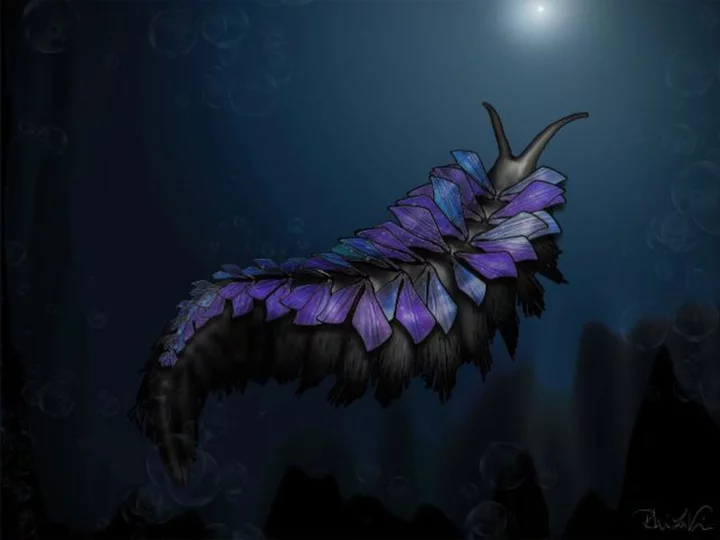A University of Kansas paleontologist exploring an area known for its fossils recently uncovered a never-before-discovered ancient sea worm -- and showed off her "nerdy" side while naming it.
When Rhiannon LaVine found the 500-million-year-old fossil, the research associate with the university's Biodiversity Institute and Natural History Museum was carrying out fieldwork with a team working on the geologic formation called the Spence Shale.
The formation is located along northern Utah and southern Idaho, according to a university news release.
"One of the last times we were out there, I split open one of these pieces of rock and instantly knew it was something that wasn't typical," LaVine said in a statement. "The first thing we see are these radial blades that look like stars or flowers."
She said she quickly showed it to Julian Kimmig, the lead author on the study exploring the annelids.
"He was perplexed, he said, 'I've never seen anything like that,'" LaVine said.
In a career first, LaVine had the honor of naming the fossil worm as the person who discovered it and as a co-author of the paper focused on it, according to the University of Kansas.
"I've been involved in describing species before, but this is the first one I've named," LaVine said in a statement. "Actually, I was able to name its genus, so I can put that feather in my cap."
Inspired by the indigenous name for the worms featured in Frank Herbert's "Dune" novels -- Shai-Hulud -- the paleontologist gave the discovery the scientific name of Shaihuludia shurikeni.
"It was the first thing that came to mind, because I'm a big ol' nerd and at the time I was getting really excited for the 'Dune' movies," LaVine said.
"Shuriken" means "throwing star" in Japanese and represents the shape of the stiff, blade-like bristles of the ancient sea worm that many other annelids also have, according to the university.
LaVine and her co-authors described the sea worm as "about 7 or 8 centimeters long, maybe a little shorter than the length of a smartphone." They found that the fossil, which is a previously unknown annelid species, is a diverse phylum of around 21,000 segmented worm species found worldwide in freshwater, marine and terrestrial environments, the University of Kansas reported.
The Historical Biology peer-reviewed journal recently published the findings.
The fossil specimen is now part of the University of Kansas Biodiversity Institute's permanent paleontological collection.

